Ear infections are a common and painful condition for dogs. Around one in every 14 dogs suffers from one every year. Breeds and crossbreeds with floppy ears, including the poodle and spaniel breeds, are more likely to get ear infections. They can occur in either ear or both ears at the same time.
What Causes Ear Infections in Dogs?
Ear infections are inflammation of the lining of the ear caused by an overgrowth of either bacteria or yeast. Dogs have a long ‘L’ shaped ear canal where dirt, moisture, and microorganisms can get trapped and cause infections. Also, there is usually an underlying disease or cause, such as ear mites or allergies. Most infections initially affect the outer ear canal (otitis externa) but can spread to the middle and inner ear canal (otitis media and internal).
How to treat dog ear infections
Vets should assess all suspected ear infections in dogs. If they are not treated promptly, they can lead to permanent deafness, facial paralysis, and problems with balance and head positioning. Treatments can include cleaning, antibiotics, anti-inflammatories, or surgery in severe cases. Ultimately, the underlying cause needs to be tackled.
Can you prevent ear infections in dogs?
Many ear infections can be prevented by thoroughly drying your dog’s ears after swimming and bathing. Keeping your dog’s ears clean is essential; unique dog ear-cleaning solutions can help. Discovering and treating the underlying cause of the infection is the best plan.
It would be best to recognize the signs of an ear infection promptly and get your dog to a vet immediately. Keep reading to discover the 14 symptoms that your dog has an ear infection.
Head-Shaking

Dogs shake their head to try to relieve irritation caused by infections.
©elbud/Shutterstock.com
Ear infections can make your dog feel something is irritating their ear, so they try to get it out by shaking their head. All dogs shake their ears occasionally. However, if your dog shakes their head more than usual, this is a common sign of a potential ear infection.
Ear Scratching

Scratching at their ears and face can indicate an ear infection.
©Sommai Iam/Shutterstock.com
Ear infections can cause itchiness and pain, and dogs deal with this by trying to scratch their ears with their rear paws. It can look quite violent, and they may make a whining noise simultaneously. Often, dogs scratch the area under the ear or their cheek on the affected side and the ear itself. Dog nails are often quite blunt and don’t cause too much damage. Excessive scratching, however, will eventually cause sore skin and fur loss.
Ear Rubbing

Rubbing their ear on sofas or the ground can help dogs to ease pain from ear infections.
©dezy/Shutterstock.com
Dogs don’t have hands to rub or itch uncomfortable parts of their bodies, so they often rub them against things. You may see your dog pushing the affected ear across your rugs or carpets. If this happens repeatedly and always on the same ear, it can indicate an infection.
Dark Discharge With Pus

A dark discharge is a sign that your dog has an ear infection.
©Glikiri/Shutterstock.com
Pus is an accumulation of white blood cells that your dog’s body has sent to fight the infection. It often looks like a dark, sticky substance coating the outer part of the ear’s lining. There may be traces of dark blood in it, too. Pus produced in the ear canal works its way to the outside and will be visible at the entrance to the ear canal.
Nasty Smell

Infected ears can smell pretty bad!
©Catalina Arango/Shutterstock.com
The mixture of pus, bacteria, yeast, and ear wax can be smelly! You may notice an unpleasant odor from your dog’s ears if they have an ear infection. It’s a good idea to get used to what a healthy dog’s ear smells like so you can tell when something is wrong.
Redness and Swelling
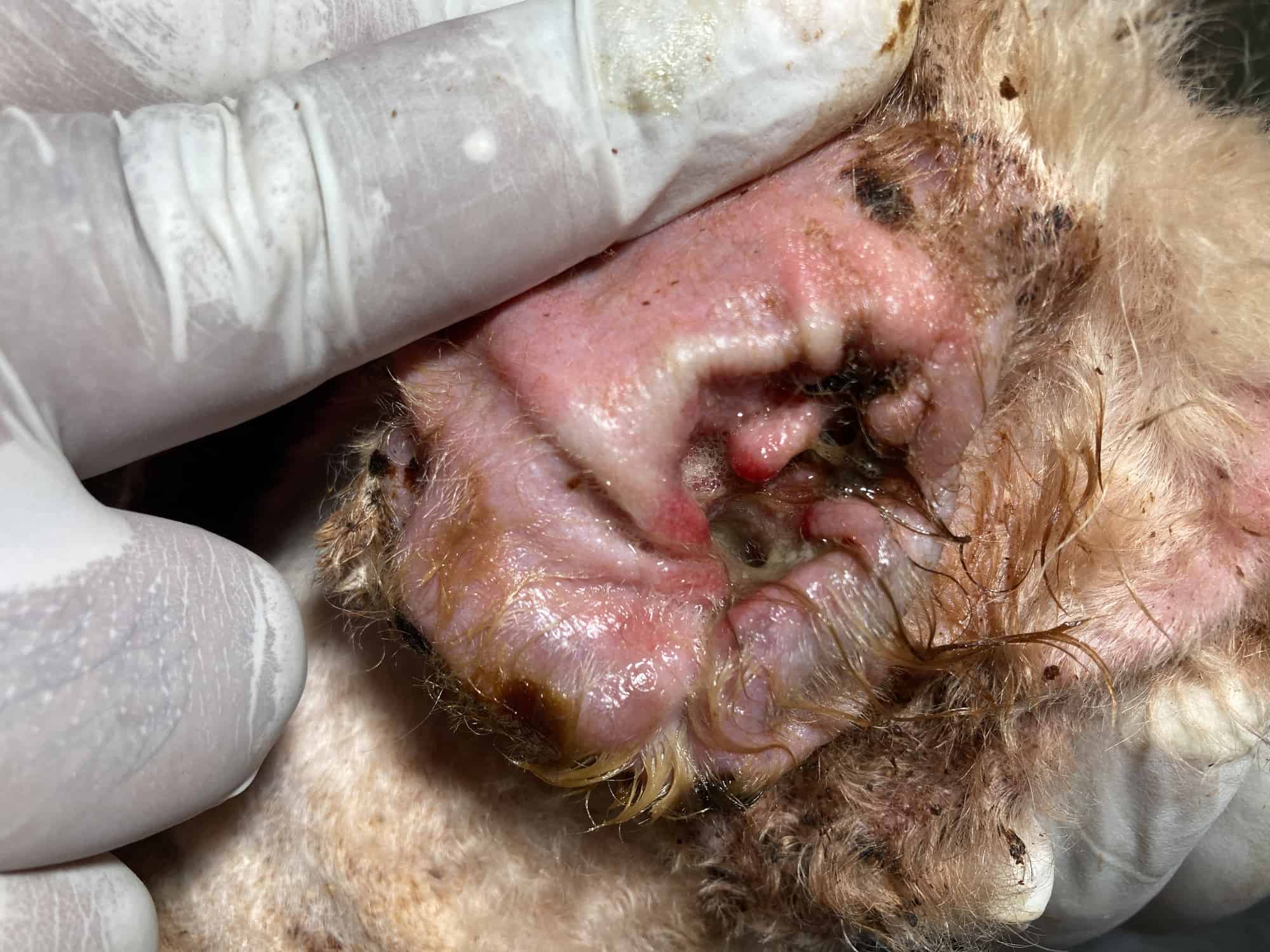
Infected ears often look red and swollen.
©Ignatius Harly Putranto/iStock via Getty Images
Overgrowth of bacteria and yeast inflames the delicate tissue lining the ear canal. This makes it look swollen and red. You cannot see very far inside your dog’s ear because it is ‘L’ shaped, but you may see signs of this on the outer parts.
Crusty Patches in the Ear or on the Face
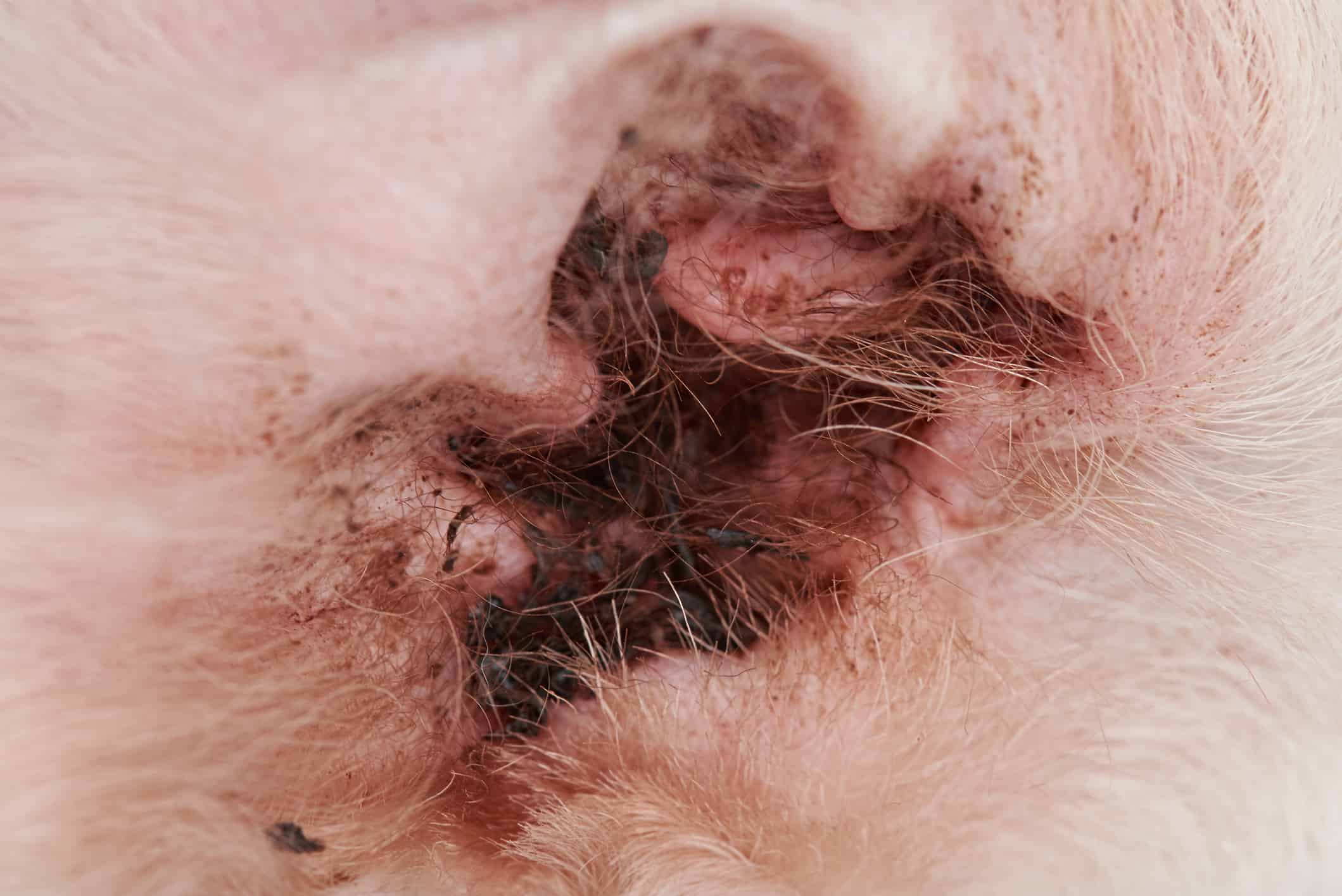
Crusty skin often accompanies ear infections.
©dimarik/iStock via Getty Images
Damaged tissue can crust over as it dries out. Also, pus can dry out on the lining of the ear. Outer ear infections can cause crusting either inside the ear or even on the side of the face near the affected ear.
Cocking Head to One Side

Tilting their head may help dogs relieve pressure in infected ears.
©katamount/Shutterstock.com
Dogs may cock their head towards the affected ear when they have an ear infection. They are probably trying to relieve the feelings of pressure and discomfort. A head tilt can indicate other conditions, so you must get it checked out.
Vomiting

Vomiting can be a sign of the acute phase of an inner ear infection in dogs.
©Dhanoo Surasarang/Shutterstock.com
This is a symptom of the acute phase of an inner ear infection in dogs. Your dog may refuse to eat at all or vomit the food they have eaten. The problem is that vomiting is a potential sign of many other conditions, so your vet will also look for other signs of an ear infection.
Drooling
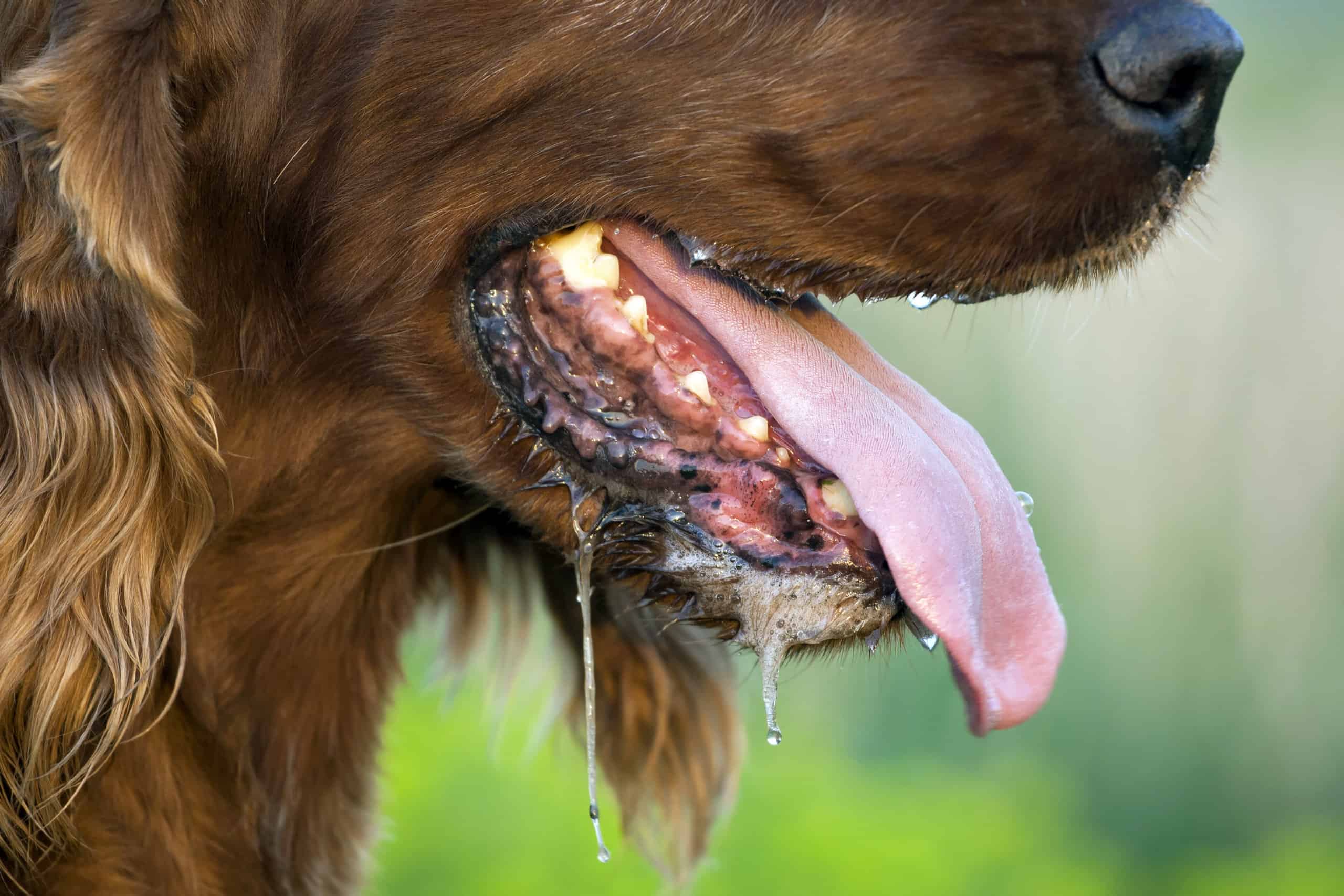
Infections that damage the facial nerve can cause excessive drooling.
©Reddogs/Shutterstock.com
Inner ear infections can cause damage to the facial nerve in dogs. This causes saliva to drip out of the mouth, and your dog will constantly drool. This will probably be more obvious out of one side of the mouth.
Difficulty Eating

Ear infections can damage facial nerves, making eating hard for dogs.
©alex_ugalek/iStock via Getty Images
Dogs with damage to their facial nerve caused by inner ear infections have problems when trying to eat. You may notice that your dog drops their food as they try to eat it. They may have obvious difficulties using one side of their mouth.
Eye Problems

Inner ear infections can cause eye redness and discharge.
©Aritel/Shutterstock.com
It may seem strange that an ear problem can affect the eyes, but it can! Damage to the facial nerve following an inner ear infection can cause dogs to lose the ability to blink. They may have ‘dry eye’, eye discharge, and drooping eyelids. In other dogs, their eyes dart back and forth.
Loss of Balance
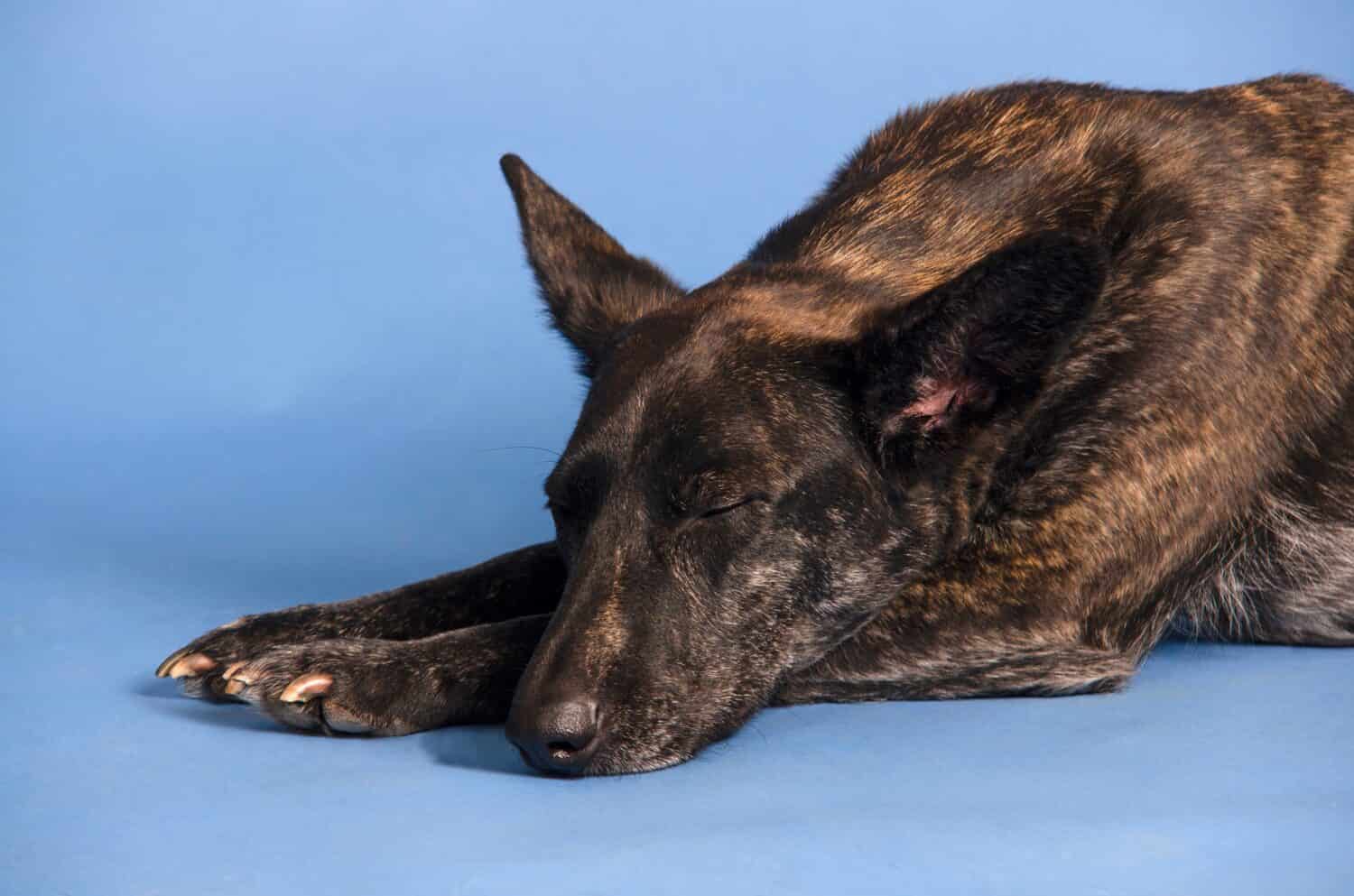
Middle ear infections can cause dogs to lose balance and fall over.
©Maria Sidelnikova/Shutterstock.com
The ear is not just for hearing! The middle ear controls balance, and infections can cause dogs to walk around in circles or lean toward the side of the affected ear. Some even fall over. This is a sign that the inner parts of the ear are infected.
Partial Deafness
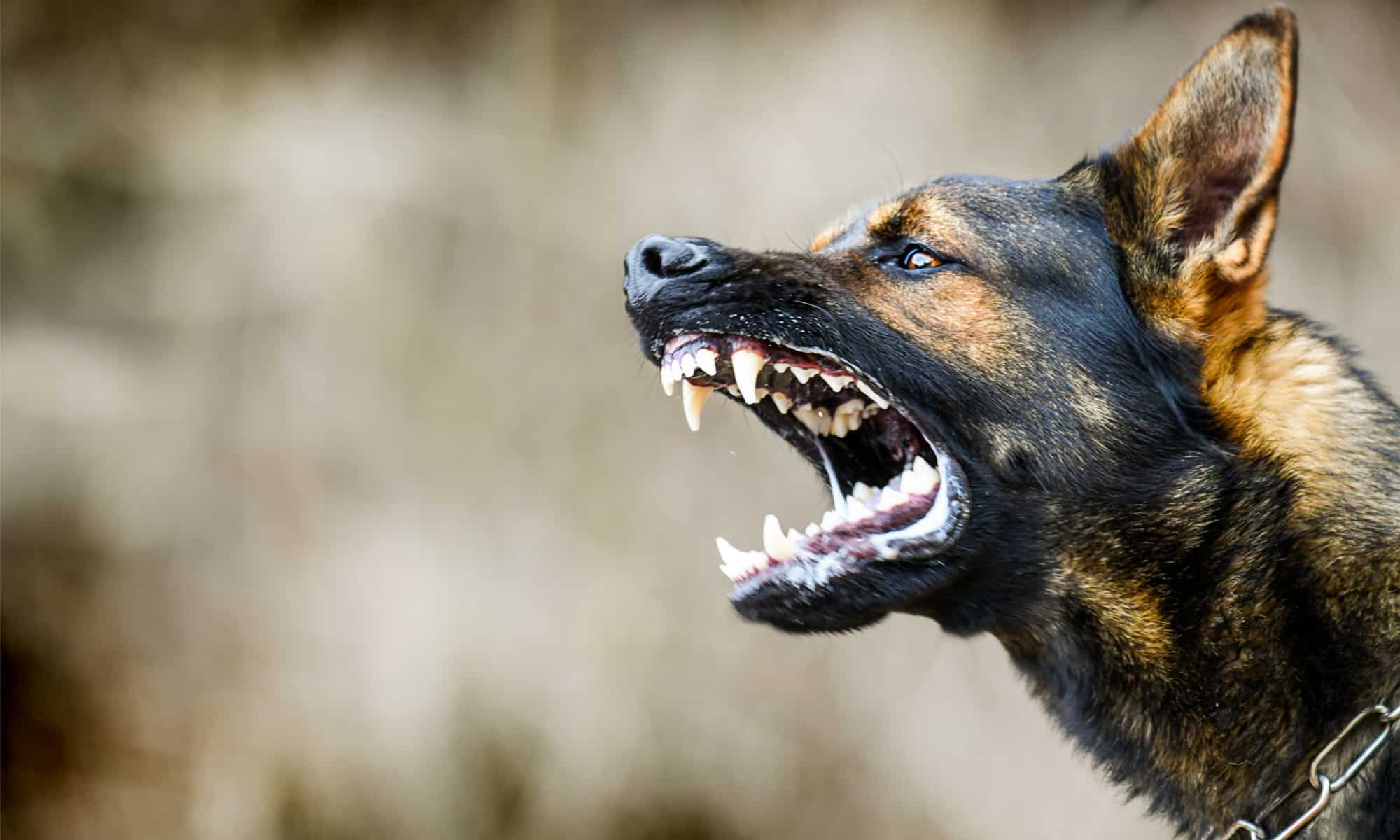
Partial deafness caused by severe ear infections can make some dogs aggressive.
©iStock.com/Milan Krasula
Dogs with ear infections can partially lose hearing in the affected ear. If both ears are infected, this could result in significant hearing loss. How can you tell that your dog is a bit deaf? They may stop responding to their name or familiar commands. Some dogs become unusually aggressive when they are startled. They may also be more sleepy or may start barking more than usual. Others stop barking altogether!
Summary of Signs of Ear Infections in Dogs
| Number | Sign |
|---|---|
| 1 | Head shaking |
| 2 | Ear scratching |
| 3 | Ear rubbing |
| 4 | Dark discharge with pus |
| 5 | Nasty smell |
| 6 | Redness and swelling |
| 7 | Crusty patches in the ear or on the face |
| 8 | Cocking head to one side |
| 9 | Vomiting |
| 10 | Drooling |
| 11 | Difficulty eating |
| 12 | Eye problems |
| 13 | Loss of balance |
| 14 | Partial deafness |
The photo featured at the top of this post is © Lunja/Shutterstock.com
Ready to discover the top 10 cutest dog breeds in the entire world?
How about the fastest dogs, the largest dogs and those that are -- quite frankly -- just the kindest dogs on the planet? Each day, AZ Animals sends out lists just like this to our thousands of email subscribers. And the best part? It's FREE. Join today by entering your email below.
Thank you for reading! Have some feedback for us? Contact the AZ Animals editorial team.







